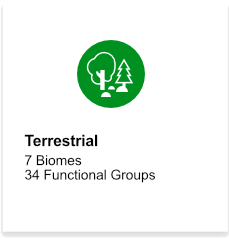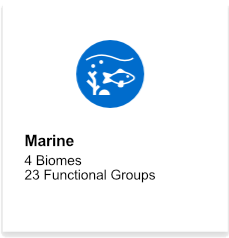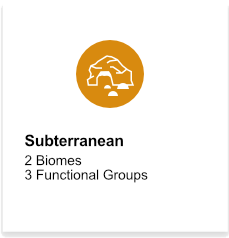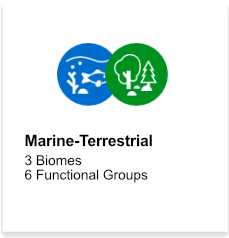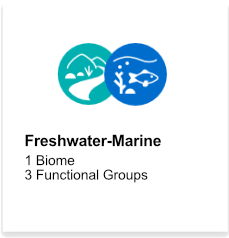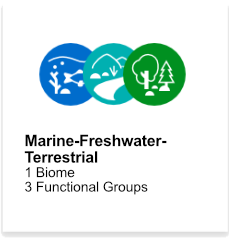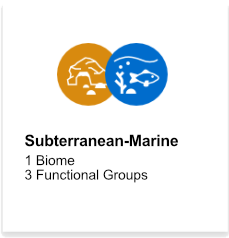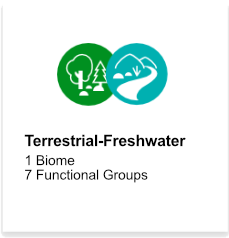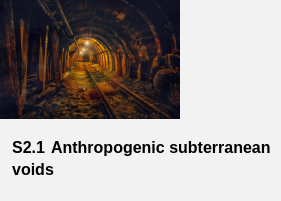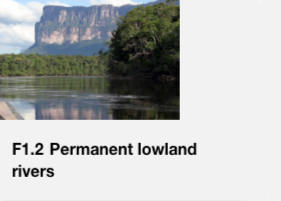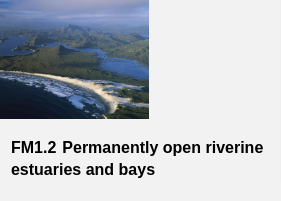 The Red List of Ecosystems
The Red List of Ecosystems
Global Ecosystem Typology

Global Ecosystem Typology
Visit Global Ecosystem Typology
+The IUCN Global Ecosystem Typology is the first-ever comprehensive classification framework for classifying and mapping all Earth’s ecosystems, which integrates their functional and compositional features. This new typology allows for more coordinated and effective approaches to identify which types of forests, reefs and wetlands, for example, are most critical to biodiversity conservation and the supply of ecosystem services, and which are at greatest risk of collapse.
The Global Ecosystem Typology (GET) comprises six hierarchical levels to support applications across global to local scales. The three upper levels classify ecosystems based on their functional characteristics, irrespective of species composition. The three lower levels of classification distinguish functionally similar ecosystems from one another based on compositional resemblance and enable integration of established classifications already in use and incorporated into policy infrastructure at national levels. This is crucial, as important conservation action occurs at local levels, where most expertise resides.
Select a Realm to learn more about the Global Ecosystem Typology:
4 CORE REALMS
6 TRANSITIONAL REALMS
The typology defines the key biophysical features of 110 major ecosystem types throughout the oceans, freshwater and land, and describes the processes that sustain them as well as their global distributions. It encompasses ecosystems that are shaped by humans - such as croplands and dams - as well as vast forest wilderness, deserts, deep ocean trenches, and even ecosystems buried below ground and beneath ice sheets.
Select a Functional Group to learn more:
Policy context
The conservation and management of ecosystems has never been more central to the future of biodiversity and human well-being on Earth. The CBD Aichi targets and UN Sustainable Development Goals mandate global action that depends directly or indirectly on ecosystem assessment. The CBD post-2020 agenda also focuses heavily on ecosystem conservation.
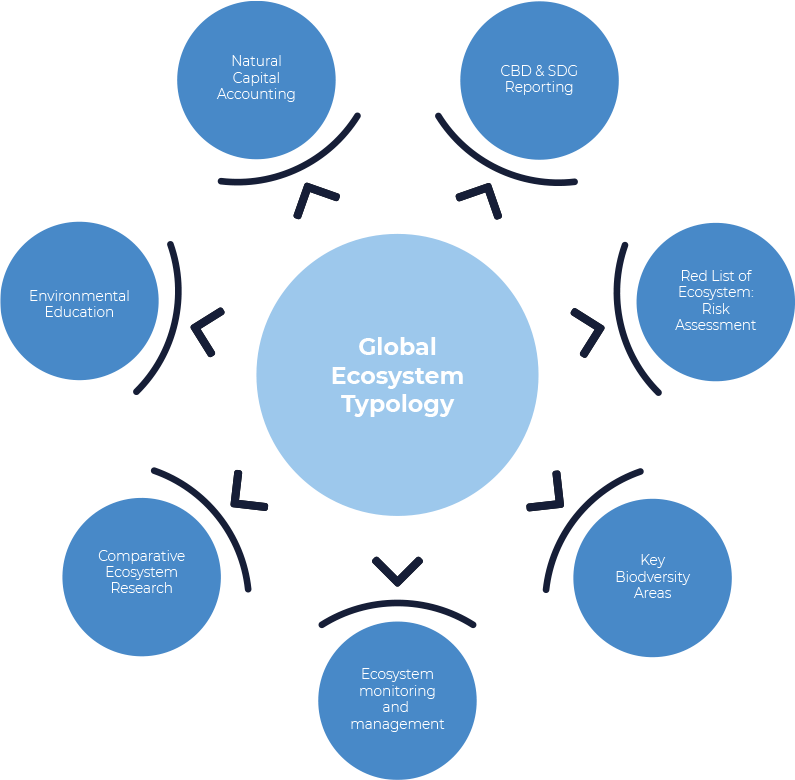
Information infrastructure to support these global policy initiatives is developing rapidly, including the UN System of Environmental-Economic Accounting - Experimental Ecosystem Accounting (SEEA EEA), and listing criteria for both the IUCN Red List of Ecosystems (RLE) and Key Biodiversity Areas (KBA), among several other tools. All initiatives, their overarching policy framework, and several other activities require a standardized, globally consistent, spatially explicit typology and terminology for managing the world’s ecosystems and their services.
Why do we need another ecological classification?
Existing global-scale ecological classifications were designed to meet different needs, not our current demand for ecosystem assessment. Several of these existing classifications have characteristics that are relevant to ecosystem assessment and management. The combination of intrinsic and utilitarian motives to conserve and manage ecosystems demands a typology that represents both ecological processes and the identity of their characteristic biota. Serving the policy needs requires scalable, systematic and mappable classification that defines ecosystem types consistently across the world. When reviewed, none of the 20 existing global-scale ecological classifications met these requirements. While many provided a useful representation of biogeographic patterns, most failed to incorporate ecological processes and functions and lacked a truly global scope encompassing all (terrestrial, freshwater and marine) components of the biosphere within a single framework. Representation of ecological processes is essential if a typology is to support generalizations about ecosystem responses to environmental change and management action. It is therefore critical to natural capital accounting, adaptive ecosystem management and sustainable management of ecosystem services, all of which depend on ecosystem functions.
Future development
The theoretical framework underpinning the typology is critical to ensuring classification robustness with a changing knowledge base plus the flexibility to accommodate new information. Future development will focus on mapping global distributions of ecosystem functional groups and developing linkages with established national classifications. Global-scale spatial modeling and remote sensing will enable the distribution of functional groups of ecosystems to be mapped at high spatial resolution.
Wide exposure will promote testing and refinements, which will be incorporated into subsequent versions and extension to local levels.

